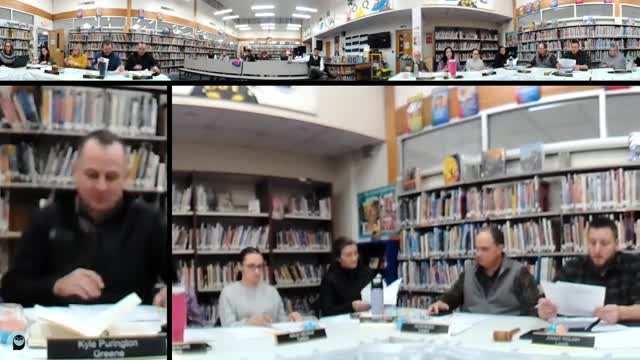MSAD 52 superintendent outlines multi‑year curriculum review, math materials review underway
January 12, 2025 | RSU 52/MSAD 52, School Districts, Maine
This article was created by AI summarizing key points discussed. AI makes mistakes, so for full details and context, please refer to the video of the full meeting. Please report any errors so we can fix them. Report an error »

Superintendent Teresa Gillis provided a detailed curriculum update to the MSAD 52 Board of Directors, describing a multi‑year plan to align pre‑K–12 curriculum with Maine learning results and to build a regular review, assessment and instructional‑materials selection process.
Gillis said the district has established a curriculum leadership team (principals, instructional coaches and content leaders), standards‑review teams and instructional‑resources selection teams. The district is currently running three standards‑work teams—math, health & physical education, and visual and performing arts—and an instructional‑materials selection team focused on math. The math team has reviewed materials, observed programs in other schools and narrowed choices to two finalists.
Gillis framed the work against the district strategic plan and described a stepwise timeline: review student‑achievement data and standards alignment; select instructional materials when needed; implement materials with professional development; and create a cyclical review process so each content area is revisited on a multi‑year schedule. She said the district’s aim is to have the current cohorts of content work completed and implemented on a staged timetable and to establish a standing assessment‑review team to vet common assessments before entering them into the district planning platform (Atlas).
Board members asked how the review will account for classroom‑level implementation issues—teacher time out of class, classroom environment, and the district’s green/white day schedule at middle/high school that affects teacher availability. Gillis acknowledged those constraints, saying committee meetings require teacher release time and substitutes; she identified teacher time and scheduling as primary implementation challenges.
Gillis said district staff will circulate a monthly curriculum update for stakeholders, and principals and committee leads will present stage‑one products (priority standards, essential questions and learning targets) to the curriculum committee and then to the full board. She described the work as a "heavy lift" but said the district is making steady progress.
Why it matters: the plan sets out how the district will choose instructional materials (math currently prioritized), align assessments to standards and build a recurring review cycle to keep curricula aligned with state learning results.
Next steps: math selection visits in late January, continued standards writing, formation of the assessment review team, and regular monthly updates to the board and district staff.
Gillis said the district has established a curriculum leadership team (principals, instructional coaches and content leaders), standards‑review teams and instructional‑resources selection teams. The district is currently running three standards‑work teams—math, health & physical education, and visual and performing arts—and an instructional‑materials selection team focused on math. The math team has reviewed materials, observed programs in other schools and narrowed choices to two finalists.
Gillis framed the work against the district strategic plan and described a stepwise timeline: review student‑achievement data and standards alignment; select instructional materials when needed; implement materials with professional development; and create a cyclical review process so each content area is revisited on a multi‑year schedule. She said the district’s aim is to have the current cohorts of content work completed and implemented on a staged timetable and to establish a standing assessment‑review team to vet common assessments before entering them into the district planning platform (Atlas).
Board members asked how the review will account for classroom‑level implementation issues—teacher time out of class, classroom environment, and the district’s green/white day schedule at middle/high school that affects teacher availability. Gillis acknowledged those constraints, saying committee meetings require teacher release time and substitutes; she identified teacher time and scheduling as primary implementation challenges.
Gillis said district staff will circulate a monthly curriculum update for stakeholders, and principals and committee leads will present stage‑one products (priority standards, essential questions and learning targets) to the curriculum committee and then to the full board. She described the work as a "heavy lift" but said the district is making steady progress.
Why it matters: the plan sets out how the district will choose instructional materials (math currently prioritized), align assessments to standards and build a recurring review cycle to keep curricula aligned with state learning results.
Next steps: math selection visits in late January, continued standards writing, formation of the assessment review team, and regular monthly updates to the board and district staff.
Don't Miss a Word: See the Full Meeting!
Go beyond summaries. Unlock every video, transcript, and key insight with a Founder Membership.
✓
Get instant access to full meeting videos
✓
Search and clip any phrase from complete transcripts
✓
Receive AI-powered summaries & custom alerts
✓
Enjoy lifetime, unrestricted access to government data
30-day money-back guarantee

